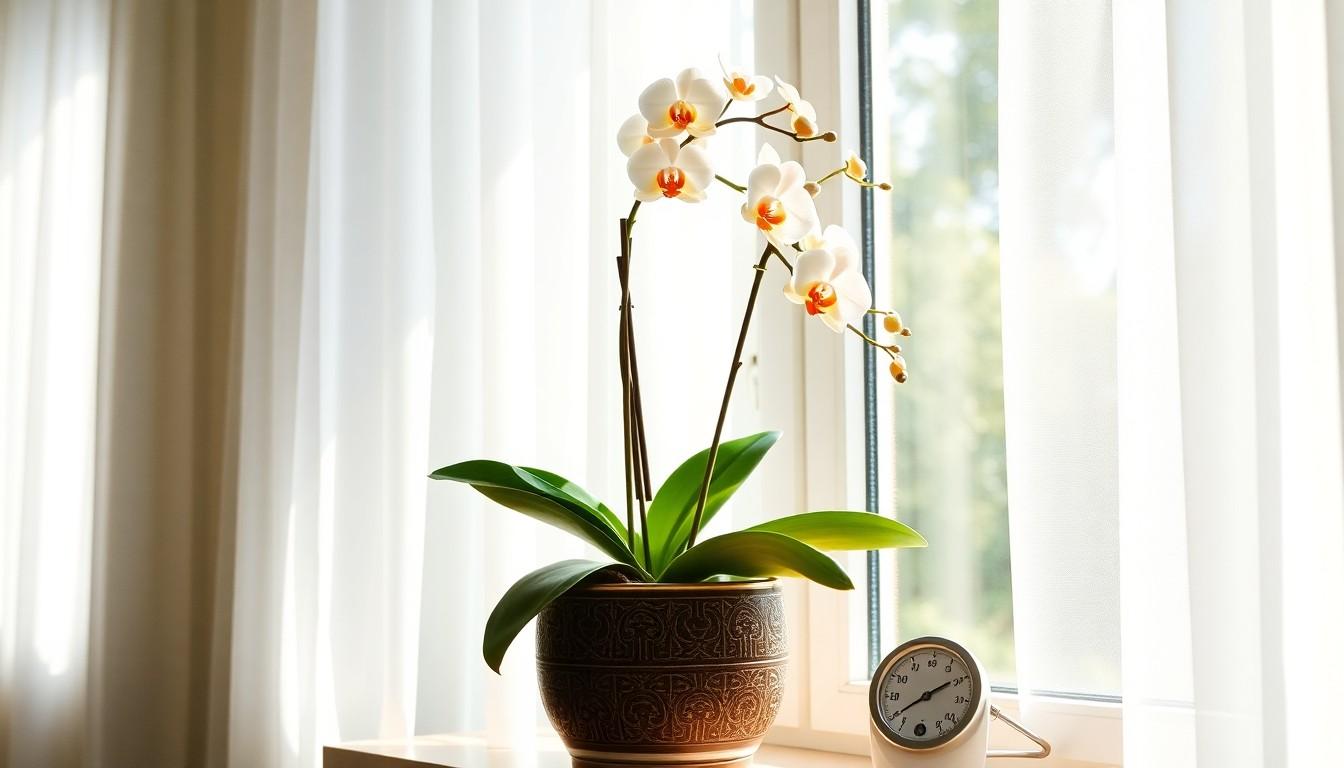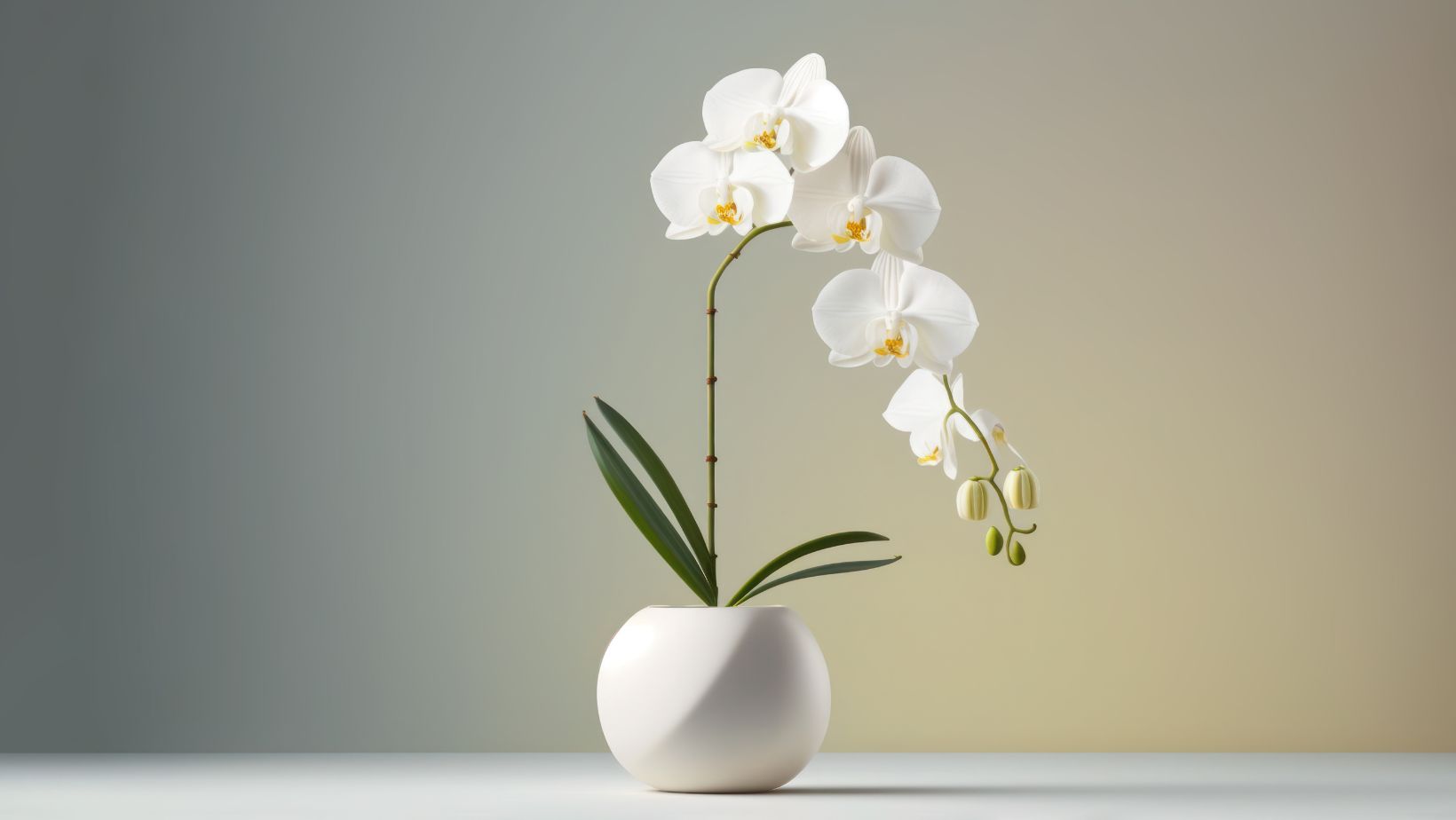Orchids are the divas of the plant world, demanding just the right amount of attention, light, and love to thrive. They might seem high-maintenance, but with a little know-how, anyone can keep these beauties blooming. Imagine having a stunning floral display that even your neighbor will envy.
How to Care for Orchid Plant
Orchids represent a diverse group of flowering plants admired for their unique beauty. These plants thrive under specific conditions that cater to their intricate needs.
Common Orchid Types
Phalaenopsis orchids, known as moth orchids, feature long-lasting blooms and a straightforward care routine. Cattleyas are famous for their vibrant colors and fragrant flowers. Dendrobium orchids offer an array of shapes and sizes, alongside beautiful blooms that vary significantly. Oncidium, or dancing lady orchids, boast unique flower shapes and markings. Lastly, Vanda orchids stand out with their striking, colorful flowers and a preference for bright, indirect light. Each type brings distinct charm and requires tailored care strategies.
Orchid Lifespan and Growth
Orchids typically live long, thriving for several years with proper care. Some can even survive decades, with an average lifespan of 10 to 15 years for many species. Growth varies by type; some bloom annually while others might only flower every few years. Understanding the growth cycles aids in proper timing for repotting and watering. Maintenance practices such as pruning spent blooms and adjusting light exposure influence growth rates significantly. Recognizing each orchid’s specific needs fosters a healthy, flourishing plant.
Basic Care Requirements
Orchids need specific conditions to thrive. Understanding light and watering techniques ensures successful plant care.
Light Conditions
Orchids thrive in bright, indirect light. A south or east-facing window offers optimal illumination. Too much direct sunlight scorches leaves, while insufficient light hinders blooming. Adjust placement throughout the year to account for seasonal changes. Using sheer curtains can diffuse harsh rays and provide a balanced light environment. Assess plant behavior; if leaves turn yellow or develop spots, consider modifying light exposure.
Watering Techniques
Orchids require regular watering but don’t tolerate soggy roots. Allow the media to partially dry out between waterings. Check the potting mix; a good rule of thumb is to water every 7 to 10 days. Overhead watering helps keep leaves clean but ensures water doesn’t pool in leaf axils. Utilizing a moisture meter can provide insights into when to water. Adjust frequency based on humidity levels and temperature.
Potting and Soil
Proper potting and soil are essential for orchid health. Selecting the right components fosters growth and supports overall well-being.
Choosing the Right Pot
Choose pots that provide sufficient drainage. Conventional pots, with drainage holes, promote air circulation around roots. Clear plastic pots allow for visibility of the roots, helping assess moisture levels. Opt for clay pots for stability and moisture retention. When considering a container size, avoid pots that are too large, as excess media can retain moisture longer than desired. Ultimately, the pot size should accommodate the orchid’s root system without excessive empty space.
Ideal Soil Mix
Utilize a specialized orchid mix for optimal results. Bark, perlite, and sphagnum moss create a well-aerated medium that supports healthy root development. Pine bark chips offer excellent drainage, while perlite assists in moisture retention without becoming soggy. Sphagnum moss can hold moisture, ideal for humidity-loving species. When mixing these components, aim for a balance that meets the specific needs of the orchid type. Adjusting soil ratios enhances the health and longevity of the plant.
Fertilizing Orchids
Fertilizing orchids supports growth and blooming. Using the right nutrients ensures vibrant flowers and healthy foliage.
Types of Fertilizers
Liquid fertilizers provide immediate nutrient absorption for orchids. Slow-release granules offer a gradual nutrient supply over time. Balanced fertilizers with equal nitrogen, phosphorus, and potassium ratios cater to general orchid needs. Specific formulations, such as those high in phosphorus, promote flowering for particular species. Organic options, including fish emulsion, supply natural nutrients and improve soil health.
Fertilizing Schedule
Fertilizing every two to four weeks during the growing season encourages robust growth. Weak solutions, typically one-quarter to one-half of the recommended strength, prevent nutrient buildup. Reducing or halting fertilization in the dormant period allows the plant to conserve energy. Observing the orchid’s growth cycle helps determine the best timing for feeding. Consistent monitoring supports adjustments to the fertilizing routine, fostering healthy blooms and vigorous growth.
Common Issues and Solutions
Orchids can encounter various challenges during their growth, but understanding common issues helps maintain their health.
Pests and Diseases
Pests like aphids, mealybugs, and spider mites can afflict orchids. Noticing tiny webbing or sticky residue often signifies an infestation. Treatments include insecticidal soap or horticultural oil, which effectively eliminate these pests. Fungal infections present another concern, often manifesting as leaf spots or root rot. Ensuring good air circulation and avoiding overhead watering minimizes this risk. Applying fungicides early can thwart severe issues, protecting the plant’s integrity.
Environmental Stress Factors
Environmental stress factors often affect an orchid’s well-being. Variations in light, temperature, and humidity levels cause stress, impacting growth and blooming. Positioning orchids near drafts or heating vents creates temperature fluctuations, which harm them. Maintaining stable conditions within the optimal range—65 to 85 degrees Fahrenheit—promotes healthier plants. Low humidity also leads to stress; using a humidity tray or misting can help. Observing the plant’s response to its environment aids in adjustments, ensuring thriving conditions.
Cultivate Stunning Plants
Caring for orchids may seem challenging but with the right approach anyone can cultivate these stunning plants. By understanding their specific needs for light, water, and nutrients, growers can create the ideal environment for their orchids to flourish.
Regular observation is key to addressing any potential issues early on. Whether it’s adjusting light exposure or monitoring humidity levels, staying attentive will lead to healthier plants and more vibrant blooms.
With patience and dedication, the beauty of orchids can bring joy and satisfaction for years to come. Embracing their unique characteristics will transform any space into a lush and inviting oasis.



